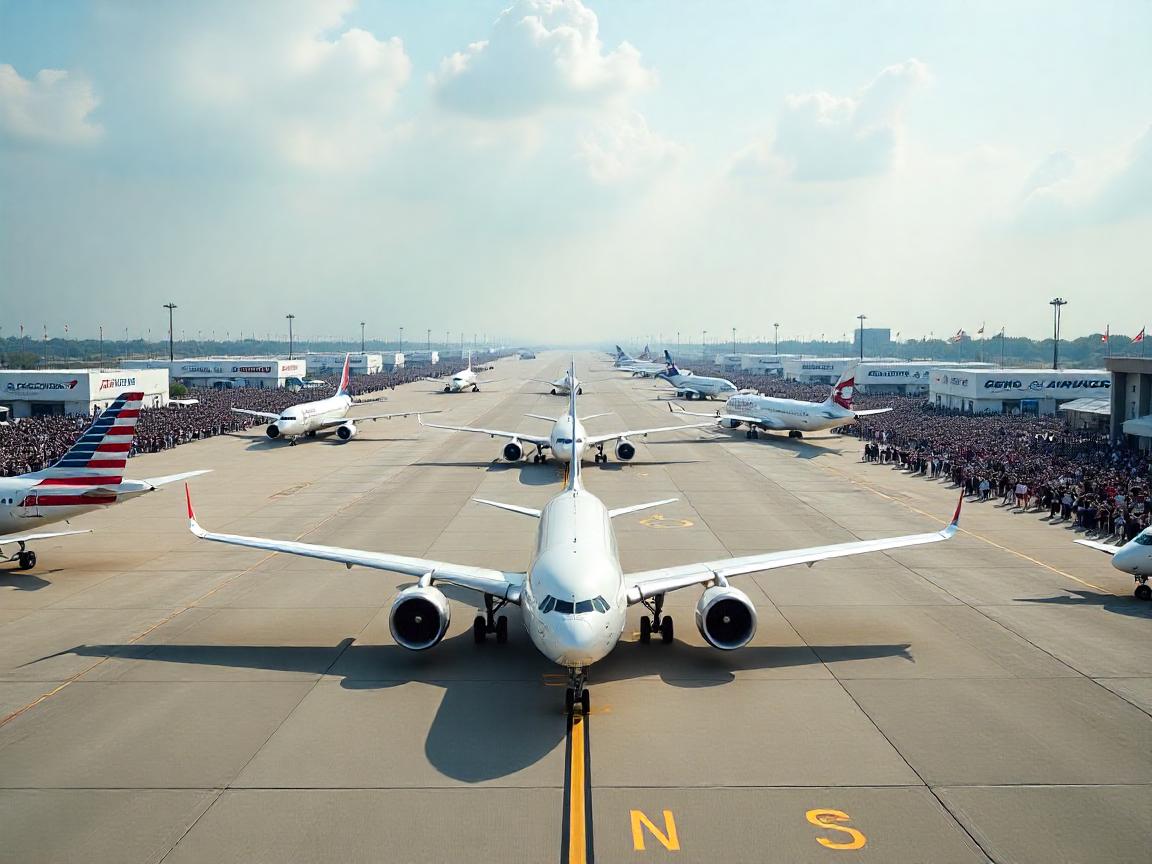Paris Air Show Overshadowed by War, Trade Tensions, and Air India Crash

The Paris Air Show, the aerospace industry's premier annual gathering, commenced on Monday at Le Bourget airfield on the outskirts of Paris, bringing together over 2,400 companies from 48 countries. Traditionally, the event is dominated by the intense sales rivalry between aerospace giants Airbus and Boeing, with major aircraft orders often announced. However, this year's show is marked by a palpable sense of complexity and somberness, as articulated by Airbus chief executive Guillaume Faury, who also chairs Gifas, the French aerospace firms association organizing the event.
A growing list of significant global challenges casts a long shadow over the proceedings. The ongoing conflict in Ukraine is nearing its fourth year, and fears of a broader conflict in the Middle East have intensified following recent Israeli strikes on Iran, leading to disruptions in commercial flights across the region. Economically, the industry faces headwinds from a projected sharp slowdown in the world economy, exacerbated by US President Donald Trump’s tariff blitz launched in April, which imposed 10 percent tariffs on US imports from nearly every country. Further, sector-specific tariffs of 10 to 20 percent on civil aircraft and parts are also under consideration by the Trump administration.
Adding to the industry's woes is a new crisis for Boeing, following the fatal crash of an Air India 787 Dreamliner in Ahmedabad, which claimed 265 lives. In response, Boeing chief executive Kelly Ortberg canceled his attendance at the Paris Air Show to focus on the crash investigation. This tragedy compounds prior efforts by Boeing to restore trust after a series of safety and quality lapses, even as the company had been making progress under new leadership.
Both Airbus and Boeing are grappling with persistent supply chain issues, which have led to delays in aircraft deliveries. These problems predate the current geopolitical and economic tensions, with the industry still recovering from the disruptive effects of the Covid-19 pandemic on its supply networks. For instance, Airbus has faced difficulties in securing enough fuel-efficient engines for its popular A320 family of single-aisle jets, leading to delays for approximately 40 aircraft. Christian Scherer, head of Airbus’s commercial aircraft division, highlighted a surprising bottleneck: a lack of toilets for widebody aircraft.
The challenges of tariffs have become an additional burden for companies like Boeing, which, according to Ortberg, are not in a position to pass these increased costs along to customers due to financial weakening from production problems. Both Airbus and Boeing leaders have advocated for tariffs to revert to zero, as was the case under a 1979 agreement, deeming it the optimal outcome for the entire Western aerospace industry.
Amidst these commercial and economic challenges, the Paris Air Show is also serving as a crucial platform for showcasing the latest military hardware. The prevailing conflicts in Ukraine and the Middle East, coupled with European countries boosting their defense budgets and concerns regarding Trump's commitment to NATO, have elevated the importance of this aspect. Frederic Parisot, head of Gifas, noted that the geostrategic environment has prompted a significant bolstering of the military display, which was previously less prominent. Around 75 companies involved in weapons production are participating, exhibiting military jets, helicopters, and drones. Notable exhibits include Lockheed Martin’s F-35 fifth-generation stealth multirole fighter and France’s Dassault Aviation Rafale. Despite a bid by NGOs to ban them over their alleged role in the Gaza conflict, nine Israeli companies are also expected to have displays.











